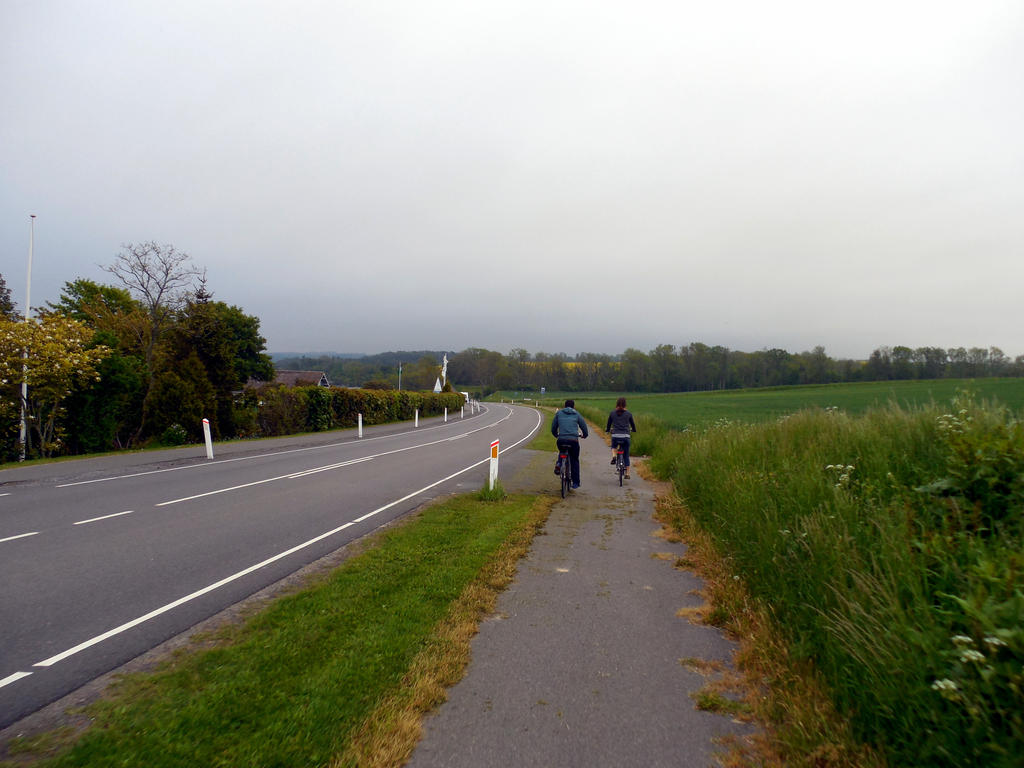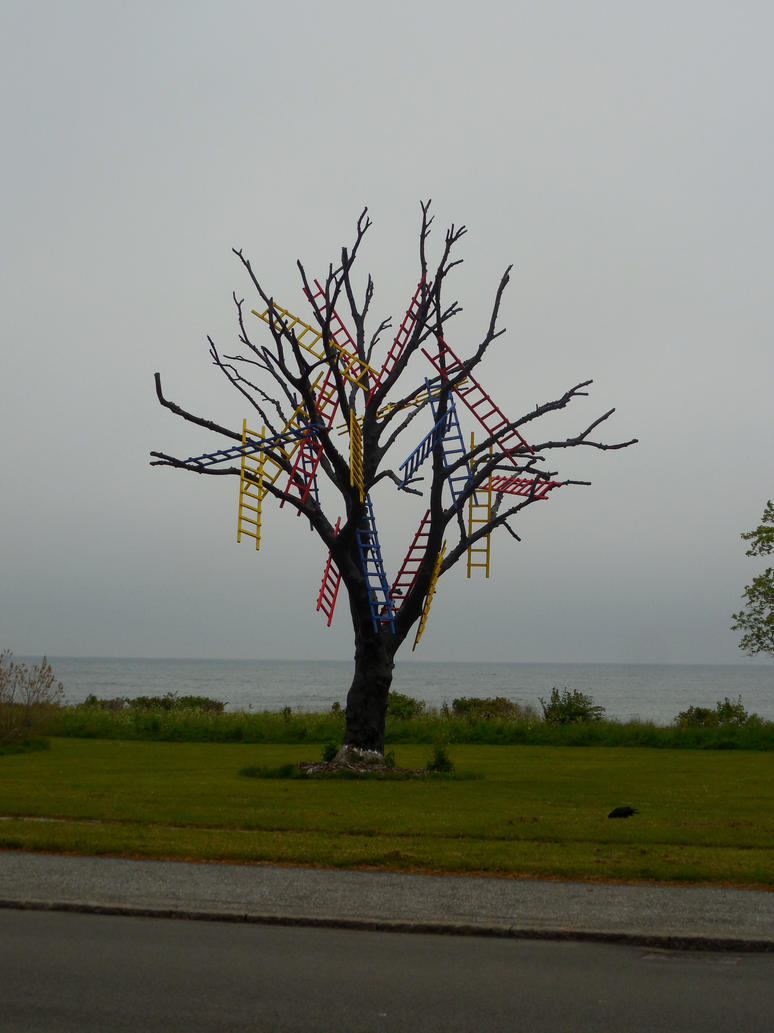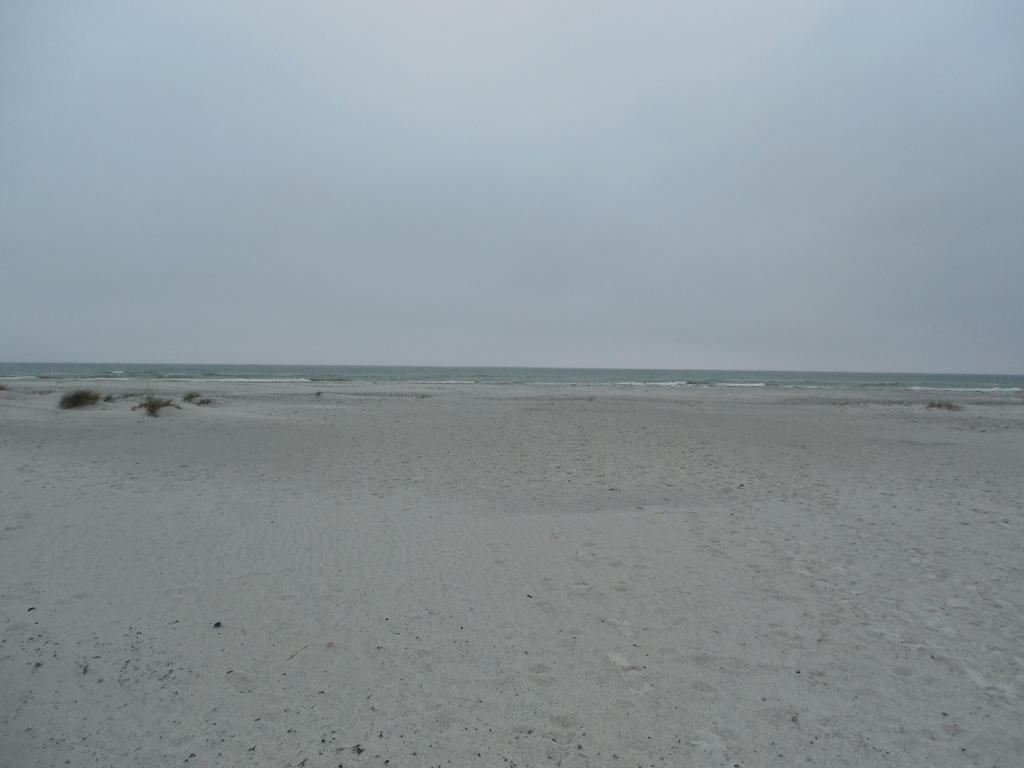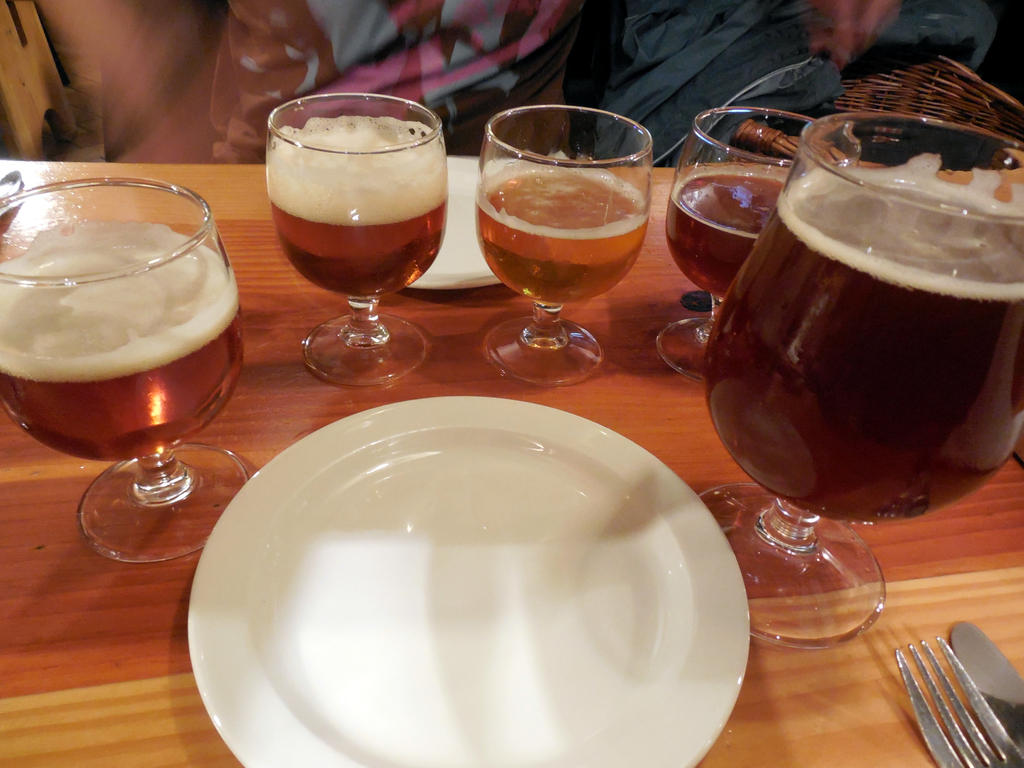Bornhom is the second easternmost point in Denmark. The farthest east is Christiansø, a small archipelago about 18 km northeast of Bornholm. It boasts an impressive year round population of 96 people.
The population of Bornholm is slightly higher, ringing in at approximately 41,000 people. Bornholm is a roughly rhomboid island in the Baltic sea with an area of 588 sq km (227 sq mi). With such a small size, it's an ideal place for a weekend of biking. It's famous for its beer, ice cream, smoked herring and glass.
Bonus: it's beautiful enough that even grey and rainy weather can't ruin the experience.
 |
| There are hills. More than I've ever encountered in a day of biking in Denmark in my life. |
 |
| A field of rape. |
 |
| Picturesque horses. |
 |
| A tree full of ladders. Normal. Located on the outskirts of Nexø. |
For our first excursion we decided to bike down to the southernmost tip of the island- a 60-something km round trip. This end of the island is somewhat famous for Dueodde beach. (Don't ask- I have no idea how to pronounce that.)
The reason for all the fuss about this unpronounceable beach is it's sand. Apparently some of, if not the finest sand in the world, Dueodde sand is used in hourglasses. It's also quite the tourist draw in the summer it seems. The area around it was filled with cute little beach houses, reminiscent of Maine or Massachusetts, and of course, kitschy eateries.
It is a really nice beach. Very white sand, light turquoise water. Waling on the famous Dueodde sand is one of the strangest feelings ever. The closest thing I can liken it is walking on cornstarch, not that that's something I've done. But it squeaks and shifts like cornstarch, so I'm comfortable with the analogy.
 |
| One of the restaurants had a camel out front. Samer went for a ride. |
 |
| The beach. This picture doesn't really do it justice, but alas my camera decided to die there. |
On our way back north to our hostel in Gudhjem we stopped in Sveneke and lunched at the Sveneke Bryghus. Much sampling of brews was done, and my illustrious co-leaders Samer and Frazer enjoyed some herring, another of Bornholm's specialties. Unfortunately we were so weighed down by the gigantic lunch we consumed that the first few kilometers of the rest of the ride back were, shall we say, difficult. But, no regrets.
 |
| Samples. Delicious samples. |
 |
| Apparently there is a Koch running a guest house in Gudhjem. I did not get to meet them. |




































